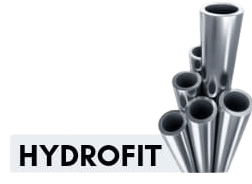+91-79045 61980 | Located in Chennai, TN
Seamless Hydraulic Pipes and Their Testing

Seamless hydraulic pipes are rigid tubes made mainly from carbon steel, usually low carbon type, which carry fluid like oil under high pressure ranging from 100 bar to 500 bar. These pipes are the backbone of hydraulic line assemblies where strength and precision both are important.
What are Seamless Hydraulic Pipes
Hydraulic pipes are joined into systems with ferrule type fittings made as per DIN 2353 standard. These fittings use a cutting ring or ferrule that bites into the pipe and hold it firm inside the assembly. The pipes generally come in size range from 6 mm outer diameter up to 42 mm, with different wall thickness according to pressure rating needed.
Manufacturing is done as per DIN 2391 or A 179 standards and the pipes are available in grades like ST 37.4 and ST 52.4. Their main strength lies in accurate workmanship, toughness and ability to withstand high pressure.
Manufacturing of Seamless Hydraulic Pipes
The pipes are made by a method known as cold drawn process or drawn on mandrel technique. In this method, a heated solid rod is pierced at the center to create a hollow. This hollow billet is redrawn again and again till the required outer and inner diameter is obtained. The process give the pipe smooth finish and strong mechanical properties.
Tests Performed on Seamless Hydraulic Pipes
To ensure safety and reliability, several tests are carried out on samples of hydraulic pipes:
Tensile Test
A pipe sample is fixed in a universal testing machine and pulled till it elongates and breaks. The strength is measured from the force applied before failure.
Hydrostatic Pressure Test
The pipe is subjected to very high pressure with water until it fails. The pressure at which it burst is recorded, and from this the working pressure is calculated.
Eddy Current Test
An alternating electric current is passed through the pipe material. By observing the resistance to current flow, any internal defect can be detected.
Surface Smoothness Test
Using a profilometer, the roughness of the surface is measured. If excess roughness is present, further treatment is done to bring smoothness.
Flaring, Flattening and Bending Test
In this test, the pipe is flared at the end, flattened under force, and bent with machine to check its workability. The results show how much the pipe can handle shaping without failing.
Salt Spray Test
Pipe sample is exposed to salt water environment to check its corrosion resistance. The longer it resists, the better is its protection from rust.
Chemical Composition Test
The exact elements present in the pipe material are found out along with their percentage, which shows the quality of steel used.
Metallurgical and Microscopy Test
Through microscopy and metallography, the microstructure of pipe material is studied to confirm strength and uniformity.
Summary
Seamless hydraulic pipes are a combination of strength, accuracy and durability. They are produced through careful processes and tested in many ways to ensure safety under high pressure conditions. From tensile to salt spray, each test prove the pipe ready for demanding hydraulic applications. With their precision and toughness, seamless hydraulic pipes remain a key component in hydraulic systems across industries.

![Hydraulic Seamless Pipe Grade [And Materials] 2 Hydraulic Seamless Pipe Grade](https://mlfkxaygshwm.i.optimole.com/w:896/h:470/q:mauto/f:best/https://hydraulicpipes.in/wp-content/uploads/2023/09/image-6.jpg)

